Check Engine Light Came On While Driving. Worried About Driving With the Light On. Advice?
When your car’s check engine light stays on, you can keep driving up to 100 miles to get the problem fixed. But before you drive, make sure everything is working right under the hood. Check that the engine runs smoothly and the temperature gauge shows normal. Also look to see if the fluid levels are where they should be and the battery is charged. Use an onboard diagnostics (OBD2) scanner tool to read the exact trouble code that made the light turn on. The code will help you and your mechanic figure out quickly what part needs to be repaired. Then you can decide if driving a short distance would make the problem worse and damage anything. If so, get your car towed. But if driving a bit more seems safe, go ahead to the repair shop.
The check engine light turning on can be worrying. It signals a problem in the vehicle’s emissions or drivetrain systems. However, it does not always mean you must pull over right away. In many cases, you can continue driving for some time.
In this guide, we will look at how long you can typically drive with the check engine light on before needing repairs. We’ll help you understand what the light means and when you should bring your car in to get checked out.
You can also read my guide on check engine light on but car is running fine to get an idea of some most common causes of check engine light.
You can jump straight to the causes section if you already have some preliminary knowledge.
- Check engine light turning on can be worrying, but doesn’t always mean you must immediately pull over. In many cases, you can drive for some time.
- Steady check engine light means you can typically drive up to 100 miles to a repair shop, as long as engine isn’t misfiring or overheating.
- Immediately check engine oil, coolant, transmission fluid levels. Low oil pressure or overheating are critical.
- Loose gas cap, bad air filter, faulty sensors (O2, MAF) are common causes. Vacuum leaks, bad spark plugs, faulty emission components also trigger the light.
- After fixing the issue, drive for 10-20 cycles so ECU relearns and turns light off if problem is gone. Get emission testing done after light stays off.
What Is Check Engine Light?
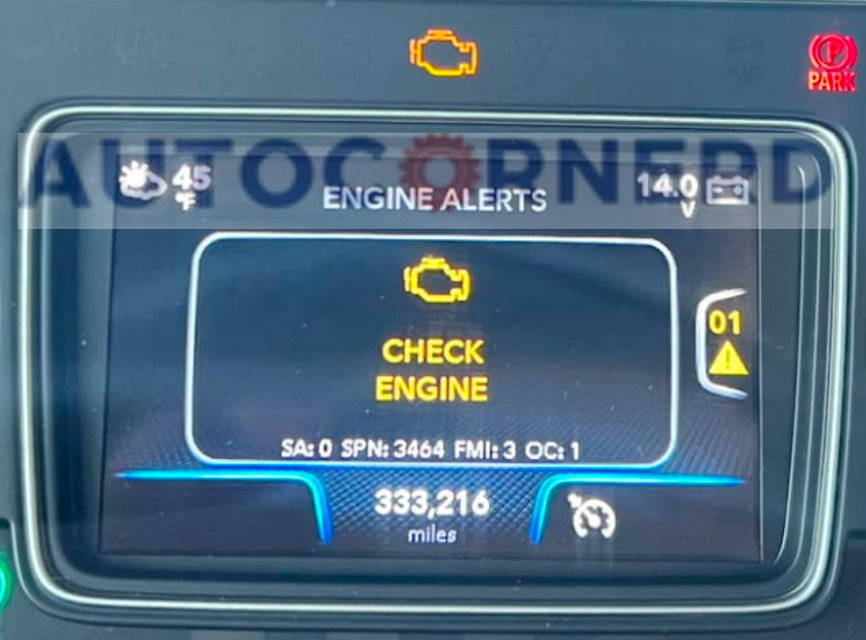
Check engine light (CEL) is a warning light that appears on the dashboard of a vehicle when the engine control system detects any problem with the vehicle’s emissions system.
A check engine light could indicate that your vehicle needs a tune-up or other maintenance work. It could be a problem that is a quick and cheap fix or it will take several days to fix and cost hundreds of dollars.
The ECU is programmed to work with different engine sensors (O2 sensor, mass airflow sensor, etc) to set the required air/fuel ratio for efficient engine performance and to control emissions. If the ECU detects the difference between the values it receives from engine sensors and the values on which it is programmed by the manufacturer, it will illuminate the check engine light.
In engines, a display message also appears on the dashboard when the check engine light is on. This display message depends on the engine.
For instance, in Toyota RAV4, the display message of the check engine light is:
“A malfunction in electronic control of the engine, throttle, or automatic transmission has been detected. Contact your dealer to have your vehicle inspected immediately.”
In some engines, the check engine light appears as a “Service Engine Soon” message.
Check Engine Light is mainly triggered when there is a problem in the vehicle’s emission system. But other issues, such as malfunctioning transmission system, overheating, spark plug damage, fuel pressure, low oil pressure, ABS and traction/stability system can also turn on the check engine light along with other warning lights on the dashboard in modern engines.
With the check engine light, your vehicle can also put be put into reduced engine power mode by the ECU to prevent further engine damage and allow you to drive the vehicle safely to your desired place.
My favorite OBD2 scan tool is Bluedriver to scan trouble codes stored in the engine’s memory. It is quite handy and affordable. You can connect it to your smartphone via Bluetooth.
Should I Drive Car If Check Engine Light Is Steady?
Yellow or orange check engine light is usually steady, and it doesn’t mean you stop the vehicle immediately. With yellow check engine light, you can drive your vehicle to a nearby auto repair shop.
You just need make sure that you’re not aggressively accelerating your vehicle and you should keep the speed of your vehicle under 50 miles/hour when check engine light is steady. If you’re driving on a highway, you should drive at a constant speed. Do not accelerate or brake too hard and suddenly. Moreover, take the turns smoothly while you’re driving your car with check engine light on.
If the check engine light is red and flashing, you should immediately stop your engine and don’t drive anywhere. You can read my guide on check engine light flashing and car shaking to learn about the most common causes of a check engine light blinking.
What Is The First Thing To Check When The Check Engine Light Comes On?
The first thing you need to check when the check engine light comes on is the level of motor oil, coolant, and transmission fluid if you have an automatic transmission system. You should check the engine air filter as well.
If the gauge on the dashboard is showing low oil pressure or an engine overheating warning, you should immediately check the oil condition and the causes of engine overheating. You can read my guide on P0128 code to get an idea of how the engine’s cooling system works.
The next thing you should check when the check engine light comes on is the condition of the serpentine belt. The serpentine belt runs auxiliary components of engines like alternator, water pump, etc.
Also, you should check your engine’s ground connections and harness connectors of engine wiring that supply voltage to the engine’s sensors if the check engine light comes on. You can read my guide on the car won’t start after replacing battery to learn how to diagnose bad ground connections.
Causes Of Check Engine Light
Here are some of the most common causes of a check engine light:
- Loose gas cap
- Bad air filter
- Bad oxygen sensor
- Bad mass airflow sensor
- Vacuum leaks
- Bad fuel tank pressure sensor
- Leaks in the EVAP system
- Bad fuel pressure regulator/sensor
- Bad catalytic converter
- Bad EGR valve
- Bad spark plugs
1. Loose Gas Cap Causing Evaporation System Error Codes
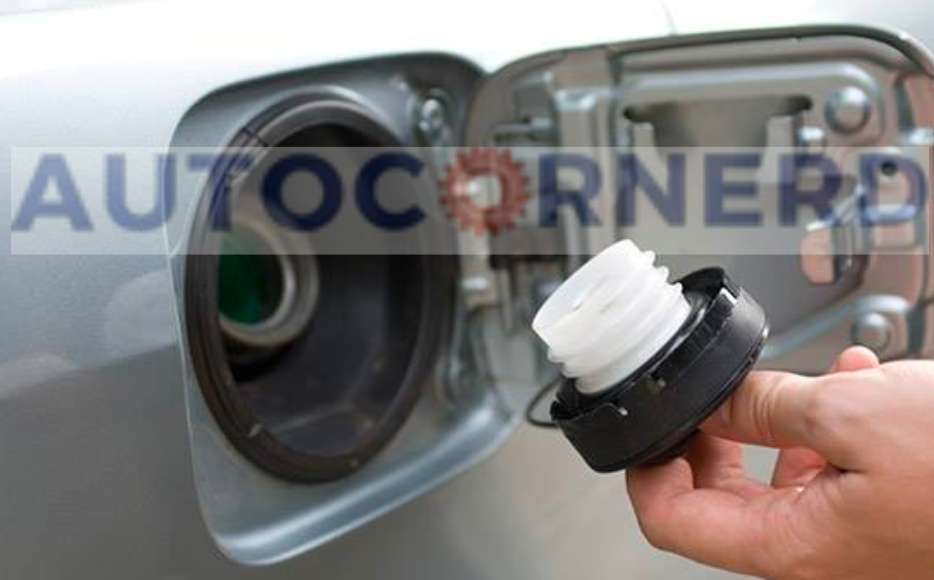
Loose gas caps are one of the most common reasons why your vehicle’s check engine light turns on. Some vehicles like the Ford Escape also separately show the message “Check Fuel Cap” when the check engine light turns on. A gas cap is a part of the EVAP system.
A loose or bad gas cap allows air to mix with the fuel vapors and affects the desired vacuum that should be present in the EVAP system. It may also cause fuel vapors to escape from a gas tank, reducing the fuel mileage and harming the environment.
Why does it happen?
A loose gas cap is caused for several reasons. One of them is the gas cap can’t be tightened properly. Another one is the the rubber gasket of a gas cap has worn out.
You also need to clean the gas cap regularly. The dirt and moisture may cause the gas cap to fail. Another hint of a bad gas cap is that it has a stick-slip feeling when tightened.
Make sure that the seal of the gas cap is not cracked. You should tighten the gas gap until you hear 3 or 4 clicks. Also, check if there are deposits of carbon or dirt around the seal of the gas cap or around the fuel filler neck of your vehicle in which a gas cap is tightened.
2. Malfunctioning Fuel Tank Pressure Sensor Triggering Emissions Monitoring Fault Codes
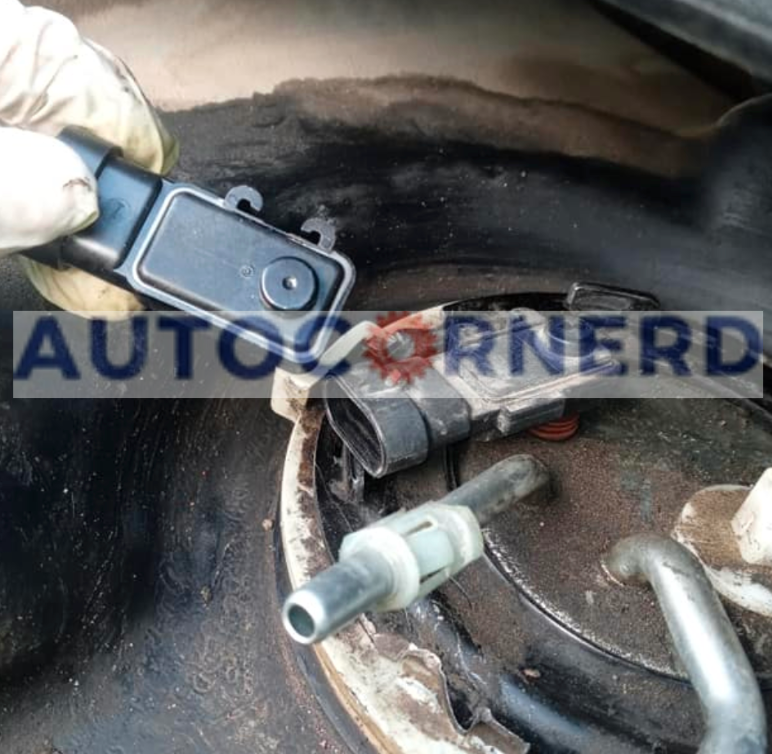
A malfunctioning fuel tank pressure sensor can cause a check engine light to come on. A fuel pressure tank pressure sensor is also called an EVAP sensor or fuel vapor pressure sensor.
The fuel tank pressure sensor sits in or is placed on the top of the fuel tank. It monitors the amount of pressure that is being built up in the tank. When the fuel vapor pressure gets too high or too low, the sensor triggers a warning light to let you know that there is a problem. For a bad EVAP sensor, you might get P0440 or P0450 OBDII codes.
How they go bad?
EVAP sensors can malfunction because of corrosion, which weakens the electrical connection, or a damaged electrical connector.
So, first, make sure that you’re getting 5V on the voltage signal terminal of the fuel tank pressure sensor. For this, you first have to verify the signal wire in the harness connector.
How to diagnose?
Turn the ignition key on. Set the multimeter to DC voltage. Connect the black probe of the multimeter to the engine ground and the red probe of the multimeter one by one to each terminal of the harness connector. There would be one terminal that would give around 5V on the multimeter.
To test the FTP sensor, you need a vacuum pressure tester and a multimeter. Turn on the ignition key. Connect the black probe of the multimeter to the engine ground and the red probe of the multimeter to the signal wire of the FTP sensor. Now, if the voltage decreases when you apply the vacuum, it means the FTP sensor is fine.
3. Leaks In EVAP System
EVAP stands for ‘Evaporative Emissions Control System‘. It consists of a charcoal canister, an EVAP purge valve, and a canister valve. If any leak in the EVAP system is detected, it will also turn on the check engine light.
EVAP system leaks are also not detrimental to your engine. But, to prevent fuel vapors leaks into the environment, you should fix this issue.
The purpose of the EVAP system is to capture extra fuel vapors from the fuel tank through the charcoal canister and re-route it to the engine air intake through the EVAP purge valve to burn with the air. EVAP purge valve only opens when ECU sends signals to it. The canister vent valve remains open all the time so that air can be sucked in to carry fuel vapors with it. The canister vent valve is only closed when a leak has to be tested in the EVAP system.
So, you should check if the EVAP purge valve is stuck open or stuck closed. Moreover, you should also check if the canister vent valve is stuck open.
You can have a smoke test for your EVAP system to detect leaks.
4. Bad Oxygen Sensor Fails To Monitor Oxygen Levels In Exhaust
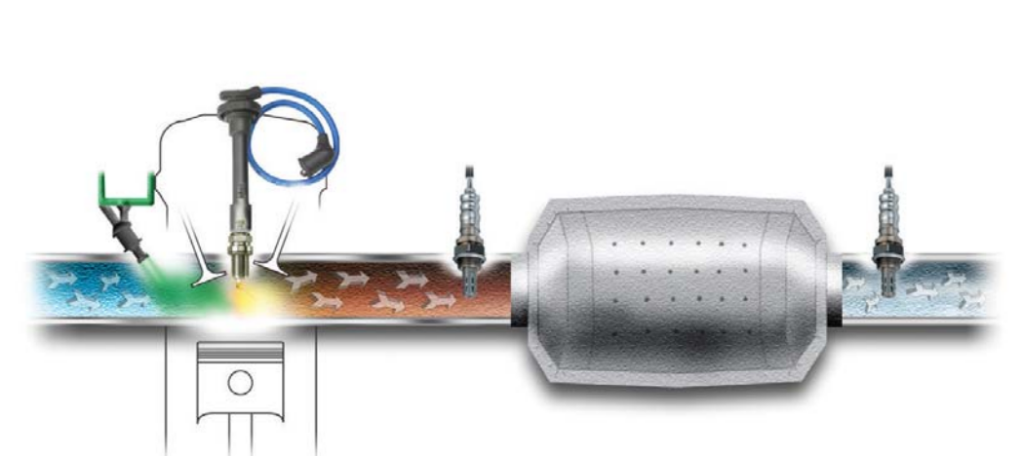
A bad oxygen sensor is the most common reason for the illumination of the check engine light.
In engines, there are two oxygen sensors. One is installed before the catalytic converter and a secondary O2 sensor is installed after the catalytic converter.
The primary oxygen sensor checks the oxygen levels in the exhaust gas and sends signals to the ECU so that it can decide how much fuel should be injected. If the primary oxygen sensor becomes bad, it will cause the air/fuel mixture to become lean or rich. If the air-fuel mixture is either too rich or lean, inefficient combustion will take place. It will also cause the engine misfire, damage the catalytic converter, and also result in poor fuel economy.
The O2 sensor after the catalytic converter to determine whether the catalytic converter is working properly. If this O2 sensor reports a high oxygen level, the ECU will interpret a catalytic converter is bad and will turn on the check engine link.
How it goes bad?
O2 sensor can malfunction due to the following reasons:
- Soot deposits
- Water in the connector
- Sensor is bent
- Frayed or broken wires
- Wires melted by contact with the exhaust
- Wire grommet is loosened, which can cause water to enter the O2 sensor
How to test?
The voltage produced by the oxygen sensor should vary within a specific range corresponding to changes in the air-fuel ratio.
In the event that the oxygen sensor malfunctions, there might be a lack of voltage variation, leading to suboptimal engine performance.
To address this issue, it is essential to have the oxygen sensor inspected and, if necessary, replaced by a certified automotive technician.
To examine the O2 sensor, connect the red probe of the voltmeter to the signal wire of the sensor and black probe to the ground connection of the engine.
In a healthy O2 sensor, voltage fluctuations should occur at least once every two seconds and fall within the range of 850mV to 150mV.
If the O2 sensor remains fixed at a particular reading or exhibits unusually high or low voltage switches, it indicates sensor failure.
5. Bad MAF Sensor Triggering Air-fuel Ratio Imbalance Diagnostic Trouble Code
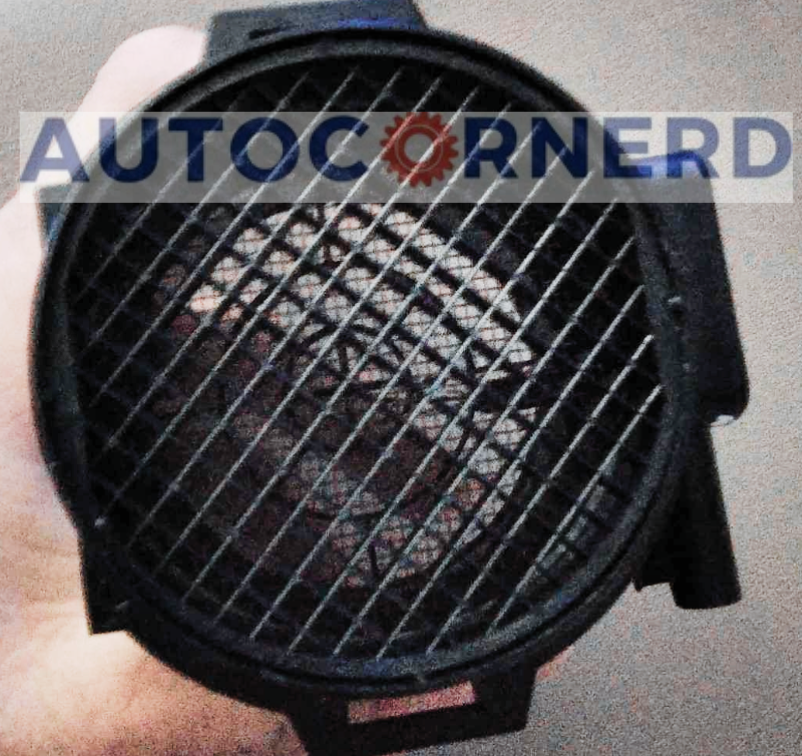
A malfunctioning MAF sensor also turns on the check engine light. Keep in mind that not all engines have MAF sensors. Some engines have MAP (Manifold Air Pressure Sensors). So, it depends on your vehicle.
MAF sensor is present after the engine air filter that sends signals to the ECU about how much air is entering the engine so that the ECU adjusts the fuel injection accordingly.
How to test?
As the mass flow rate of air through the MAF sensor increases, voltage output also increases.
When you push the gas pedal, more air goes through the MAF sensor. This makes the voltage go up. When the car is not moving much, the voltage should be less than 1.0V. When you make the car go faster, the voltage from the MAF sensor goes up from 1.0V to 1.7V.
How to fix?
Before replacing the MAF sensor, you should first try cleaning it.
To clean the MAF sensor, follow these steps:
- Disconnect the negative terminal of the battery.
Remove the MAF sensor, it is located on the intake tube between the air filter box and the throttle body facing upwards. - Spray all of the little sensors you see inside of the MAF carefully with this MAF sensor cleaner. Avoid touching the wires of the MAF sensor. It will damage it.
- Reinstall and reconnect the battery terminal.
- Start the engine and let the ECU relearn idle for 15 minutes.
Here is a short Youtube video explaining how to clean the MAF sensor.
6. Vacuum Leaks Causing Imbalance In Air-Fuel Ratio
A vacuum leak happens when unmetered air gets into your car’s engine. This extra air messes up the balance of air and fuel that the engine needs to work well.
When the engine breathes in, the piston inside it moves down, making room for air to come in. This makes the air pressure drop a bit in the engine, like a tiny vacuum cleaner.
Due to this vacuum, air can leak into the engine if there is any crack some where.
How do these happen?
- The intake manifold is an important engine part that spreads air evenly so the engine can work right. But sometimes, things can go wrong. Cracks or holes in the intake manifold let extra air sneak by. Air gets in where it shouldn’t. This causes a vacuum leak. To fix it, check the intake manifold carefully. Look for any cracks or holes. If there are problems, replace the intake manifold. A good intake manifold keeps air flowing just right.
- There are also intake manifold gaskets. These gaskets seal up the space between the intake manifold and engine block. This keeps air from getting in or out. But over time, gaskets get old. They stop sealing rightly. Extra air can now sneak past the gaskets. This causes another vacuum leak.
- Finally, look at the vacuum hoses. These hoses move air to different engine parts. If a vacuum hose breaks or gets loose, extra air gets in again. One more vacuum leak happens.
How to detect?
- Listen for Hissing Sounds: Sometimes, you can hear a hissing noise like air escaping. Try to figure out where it’s coming from.
- Use Smoke: Professionals use machines that blow smoke into the engine. If there’s a leak, you’ll see smoke coming out from the problem area.
- Try Carb Cleaner: You can use a special cleaner to find leaks. Spray it around and see if the engine reacts, showing you where the leak is.
7. Bad Fuel Pressure Regulator Causing Irregularities In Fuel Delivery
The purpose of a fuel pressure regulator is to maintain a certain fuel pressure inside the fuel rail so that the fuel injector injects the fuel at a certain pressure and doesn’t damage the spark plugs and cause the engine misfire.
If the fuel pressure regulator fails to maintain the fuel pressure, it will also turn on the check engine light. You can read my guide on symptoms of bad fuel pressure regulator to learn more.
If you have a Gasoline Direct Injection engine, it will have a fuel pressure sensor instead of a fuel pressure regulator. This fuel pressure sensor sends signals to the ECU to control the solenoid valve of a camshaft-driven GDI fuel pump.
8. Bad Catalytic Converter Exceeding Emissions Thresholds
A catalytic converter is designed to convert harmful exhaust emissions into harmless gases. However, a defective catalytic converter can cause problems in your engine.
Catalytic converters tend to block up and become less effective over time. When this happens, you may notice a Check Engine light come on.
The catalytic converter is activated by the engine’s exhaust gas temperature. If the catalytic converter is clogged, it will also cause overheating problems in the engine, and can also affect fuel economy. You can read my guide on CAT Delete to understand the operation of a catalytic converter.
How to detect?
If your scan tool is showing any OBD2 code related to bad emissions or catalytic system efficiency, you should immediately check the catalytic converter. This guide on testing a clogged catalytic converter is also quite helpful. You should check that out.
9. Bad EGR Valve Impacting Exhaust Gas Recirculation
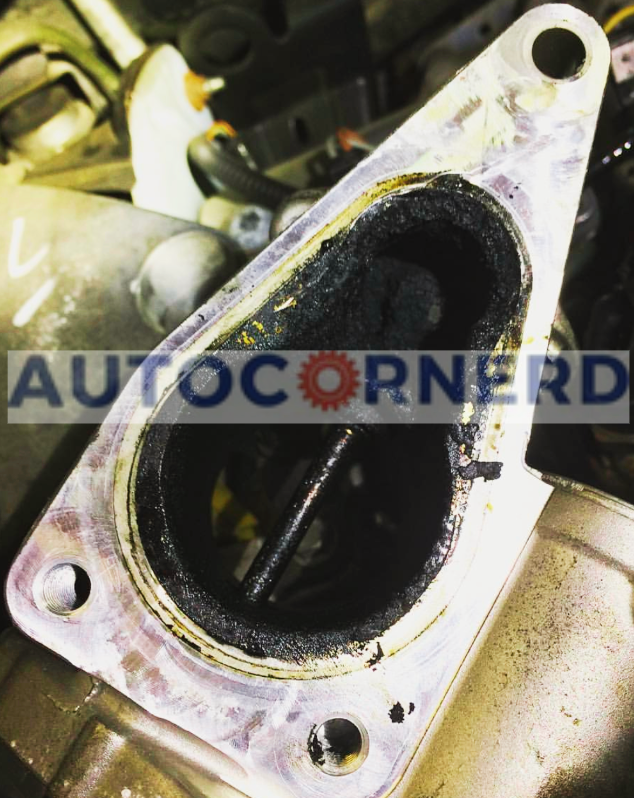
EGR stands for Exhaust Gas Recirculation. EGR system is used by diesel engines to retract exhaust gases to the air intake manifold so that their heat energy can be utilized and efficient combustion can be taken place.
Due to exhaust gas recirculation, NOx emissions can also be reduced in the exhaust gases. Since a malfunctioning EGR valve affects your vehicle’s emission system, it will turn on the check engine light.
A frequent problem with the EGR valve is that it is often stuck due to a build-up of carbon deposits. The EGR valve passages are blocked by the carbon deposits. Blocking the EGR valve can increase fuel consumption and reduce engine performance, which can turn on the check engine light.
It is okay to keep driving for now. Your car will run fine. The EGR valve does not affect how the engine runs. But you should take your car to a repair shop soon. If it is not working right, you will get a check engine light with code P0400, P0401, or P0402.
10. Bad Spark Plugs Causing Misfires
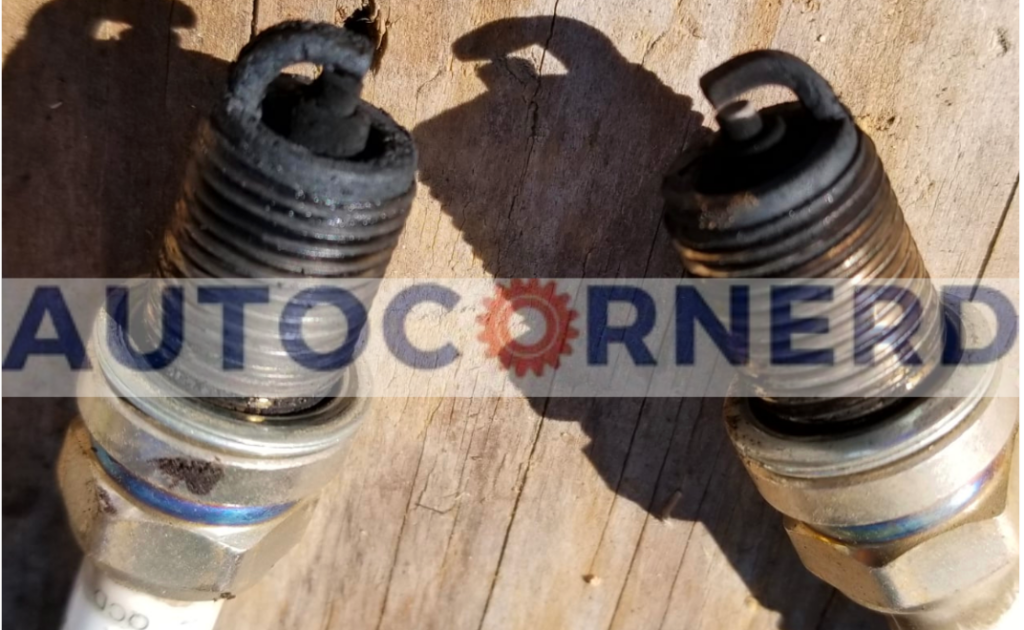
A bad spark plug is also responsible for Check Engine Light On. The spark plug delivers a spark when the ignition coil applies a high voltage current to it. As a result of the spark, the air/fuel mixture ignites to produce power.
A bad spark plug can result in the engine misfire, which can cause a variety of problems. A bad spark plug can even cause the car to stall out.
If the engine misfires, it will cause the vehicle to lose power and it will not produce the desired level of performance.
Why does it happen?
With time, a spark plug is fouled with the fuel deposits, ash deposits, corrosion and engine oil deposits. Usually, in owner’s manuals of vehicles, it is recommended to replace spark plugs every 30k to 60k miles.
I have found this amazing guide (bad spark plug signs PDF) that includes pictures of all possible damages with the spark plug.
How to test?
You can test spark plugs by using a multimeter and setting it to resistance measurement. You should get a reading between 4,000 to 8,000 ohms on the center electrode.
In addition, you should look for a short between the ground and center electrode of the spark plug. No short means a good spark plug.
You can watch following YouTube video to learn more:
How to fix?
Start by hitting them with short blasts of compressed air. This clears out loose bits like dust and dirt. With the heavier grime still stuck on, it’s time to soak the plugs in brake parts cleaner. Let it sit for a few minutes so the solvent can dissolve away oily residue and baked-on engine grunge.
Gently scrub with a wire brush to dislodge contamination from the electrode and insulator without damaging their surfaces.
Rinse off any leftover cleaning solution so they’re completely dry, then put them back in place and try starting up. With all that grime gone, the plugs should spark properly for clean ignition.
If they still misfire, it’s best to grab a fresh set.
How Long Does Check Engine Light Stay On After Fixing The Problem?
The check engine light may remain illuminated for up to 20 trips after fixing an issue. Once you’ve completed 10 to 20 drive cycles, the check engine light should turn off if the problem was resolved.
Sometimes an error code gets stored in the engine computer’s memory. Best practice is always clearing the codes and resetting the ECU with the OBD2 scan tool after making a repair.
A drive cycle refers to a series of vehicle outings. Usually one drive cycle involves a short trip finishing within about 20 to 30 minutes. Drive cycles permit the ECU to run all its monitoring systems following a repair, so the ECU can confirm if the problem persists.
Will My Car Pass Emission Test If I Reset The Check Engine Light?
When your vehicle’s check engine light comes on, it’s best not to perform emission test immediately. Give the engine computer time to fully relearn after any repairs.
The check engine light signals a possible defect in your car’s emission control systems. So once you’ve addressed what’s tripping the code, let the electronic control unit (ECU) fully ascertain the fix by putting the vehicle through various drive cycles. Around 20 typical drives should do the trick.
During cruise modes and other everyday driving, the ECU will monitor components and recalibrate as needed. If after those trips the check engine light stays off, the ECU has likely reprogrammed and verified the emission systems are clear. At that point, your car should pass the emissions test with flying colors.
Final Thoughts
If the check engine light is on and steady, you can drive as long as your car runs smoothly. As a rule of thumb, you should not drive more than 100 miles when the check engine light is on.
Use the OBD2 scan tool to get trouble codes and fix the problem. Don’t forget to clear codes from the engine’s memory. After fixing the problem, complete certain drive cycles and also pass the emission test.
Some First Hand Experiences Shared By Users In Different Communities
Our team conducted research across various online communities, forums, and subreddits to gather user comments and opinions on “driving with check engine light”.
User 1 says:
In my case, with a VW Golf, the light meant a serious transmission problem. Drove about 30 miles to a specialist. They advised against driving more to avoid further damage. Ended up needing significant repairs.
User 2 says:
I have a Jeep Wrangler, and the check engine light came on during a desert trail. Managed to drive 50 miles back to civilization. It was an issue with the EGR valve. Fixed it the next day at a local shop.
User 3 says:
I have a Dodge Charger, and the check engine light usually means trouble. Drove only 20 miles before getting it checked. It was an issue with the fuel injector. Fixed under warranty, so that was a relief.
User 4 says:
Had a ‘check engine’ light on my 2008 Honda Civic. Initially ignored it for a week. Drove around 150 miles before the car started jerking. Turns out, it was an oxygen sensor failure. Found out after a diagnostic scan at a local garage. Replaced it, and the car’s been smooth since.
